Varieties of variegated violets
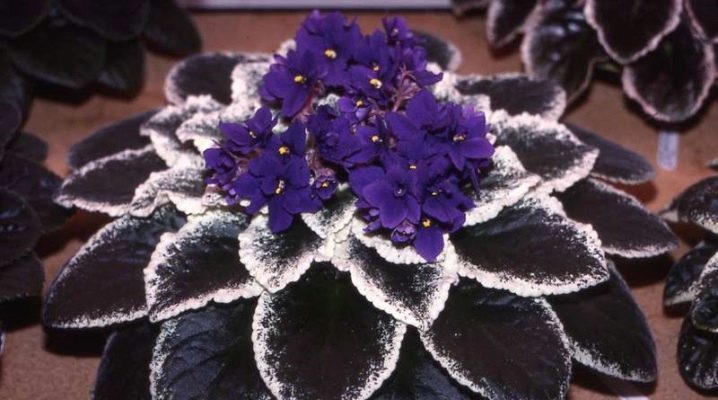
It is not for nothing that variegated violets are very popular with collectors: these plants delight with their unusual beauty not only during their flowering, but constantly. The variety of varieties and colors of flowers and leaves makes it possible to use them as a decoration not only for park and garden areas, but also to create unique compositions for the interior of the premises.
The variegated leaves look really unusual and elegant. In addition to the usual green, the color of the leaves may contain several other colors unusual for this part of the plant. It can be yellow, beige or even pink. There are also varieties of violets with white leaves.
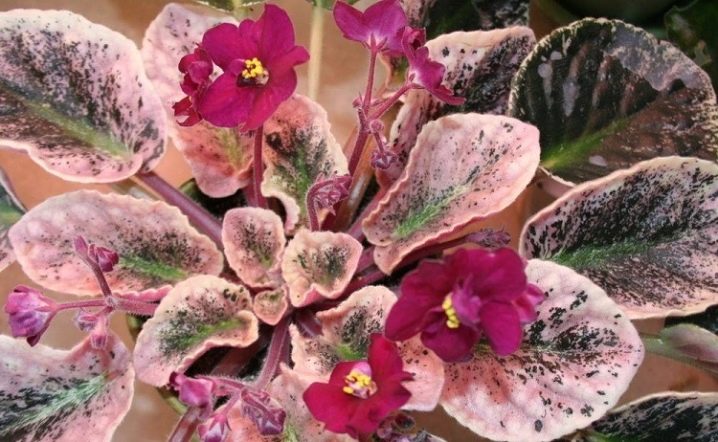
Features and types
Scientists around the world have long wondered about the reasons for the uneven pigmentation of these plants and came to the conclusion that it arose under the influence of natural plant mutations. The first variety of variegated violets was obtained in the middle of the twentieth century in the States. At the same time, the variegation of the leaves was spontaneous, that is, it could not be brought out on purpose. The first varieties of violets could have one or more multi-colored leaves. Plants did not receive due attention at special exhibitions due to the instability and unpredictability of color.
This type of violet has been called "spontaneous selection". Variegation in this type is almost never inherited. In addition, the color may be unstable, changing over time to a uniform green. Such a random mutation can appear as a result of an excess of nitrogen in fertilizers or if the flower has been in conditions of too high a temperature for a long time.... Spontaneous variegation is characterized by pale pink, lemon yellow and beige colors.
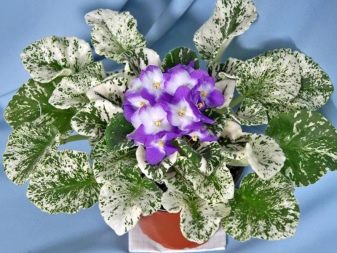
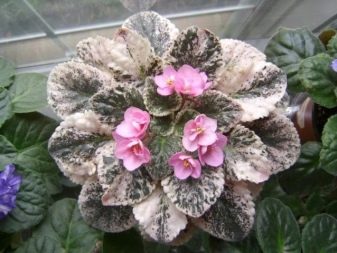
Today, more than half a century later, about 4 thousand different varieties of variegated violets are known. As a result of many years of research of foreign selection, a catalog was compiled in which the variegation of violets was divided into 3 main types:
- Tommie Lou's variegation, named after its founder. The main background of the leaves is traditionally green, the edging along the edges is pronounced, has clear boundaries and a pink or yellowish-beige color. The brightness of the color and the number of colored patches may vary depending on the environment. This type of plant has enough chlorophyll, so it feels great both in natural light and with an artificial lamp. Tommy Lowe reproduce in the same way as ordinary violets. Cuttings take root quite easily, and the offspring appear at the same time as other representatives of this genus.
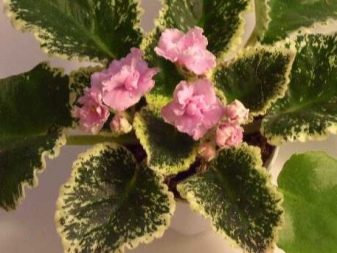
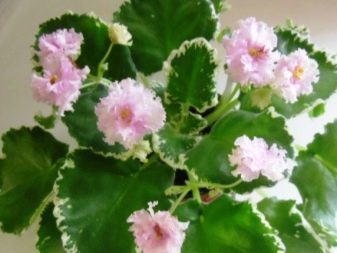
- Crown variegation (Champion) expressed not as clearly as in the previous group. Small strokes of pale green, beige or pinkish shades are present on the entire surface of the leaves and most often disappear after the first flowering, after which new variegated leaves grow. A characteristic sign of crown variegation is the lower petals of a solid green color, and in the upper petals, chlorophyll, which is responsible for the presence of greenery, may be completely absent. Violets belonging to this group reproduce by leaf cuttings.
They require special careful care. For example, they need a constant additional source of light; when breeding, babies require increased temperature and humidity.
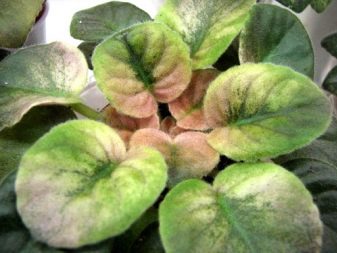
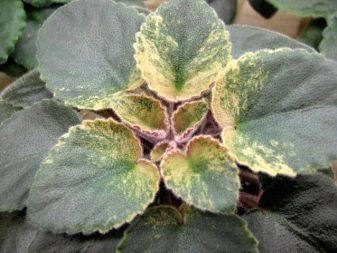
- Mosaic variegation - one of the rarest and most attractive types, which is expressed in multi-colored specks and strokes randomly located over the entire surface of the leaves. At the same time, not only young, but also earlier leaves can be multi-colored. One plant with mosaic variegation can have up to several shades at the same time. To preserve variegation, such violets require a certain temperature regime (18-25 ° C) and additional lighting. They absolutely cannot stand the heat, and they need regular abundant watering.
To wait for flowers, you need to be patient - the flowering period begins later than that of ordinary violets.
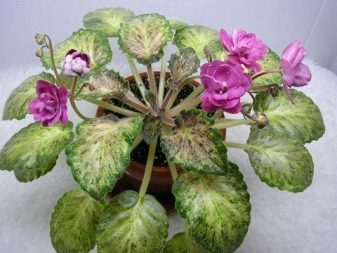
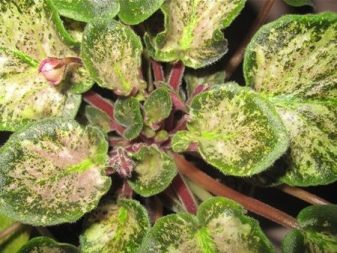
There are also chimeras... This group of saintpaulias includes specimens in which the pattern not only has clear boundaries, but is also repeated on all leaves. Color spots can be light or dark.
This type is quite rare, since it reproduces exclusively by stepchildren, which are formed from the mother plant. But even they cannot guarantee that the future plant will inherit the variegated character. The uniqueness of chimeras is in their genetic structure. If you cut the petal across and examine it under a microscope, you will notice that the petal consists of two layers, one of which creates the main background, and the other - additional.
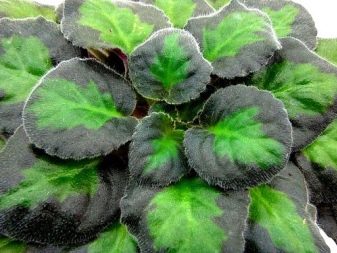
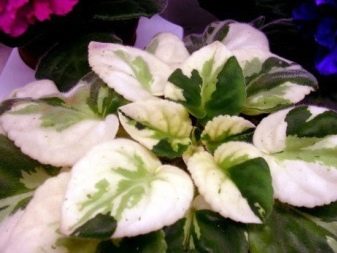
Care
To preserve the colorful color of Saintpaulias, for which collectors and simply amateur flower growers appreciate them, some rules must be followed.
- A special soil containing less nitrogen than ordinary violets.
- Additional light source. It is desirable that this be diffused light. Areas of the petals that do not contain green pigment react negatively to direct exposure to sunlight. It may even burn the leaves.
- Moderate temperature. Most variegated violets do not tolerate heat well, and at temperatures above 28 degrees, they lose their individual color.
Due to the fact that the process of chlorophyll formation in white leaves is slower than in conventional varieties, they are less viable. Therefore, it is believed that the best leaves to reproduce are completely green.
If the leaf is variegated, for the first few weeks it is necessary to feed it with nitrogen-containing fertilizers so that it gains strength and becomes viable.
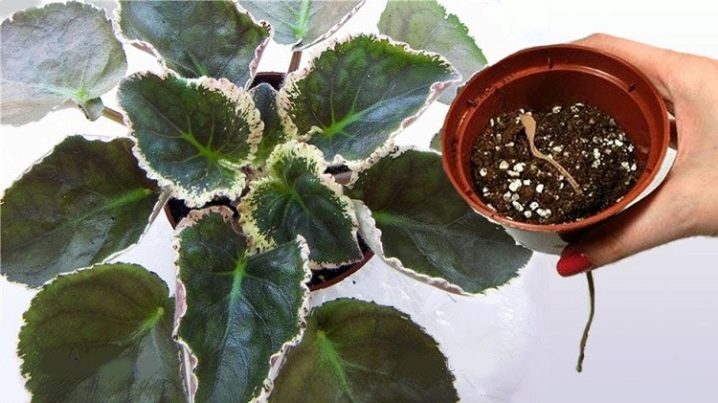
Selection of variegated violets
If you have joined the army of fans of these unusual and incredibly beautiful plants and decided to acquire one or several specimens at once, you should familiarize yourself not only with the names of the varieties, but also with their descriptions. Novice growers can be advised to buy an adult plant at once, and not undertake to grow it from a shoot, because, as mentioned above, variegated leaf is an extremely capricious and picky plant.
Here are some examples of the most famous varieties.
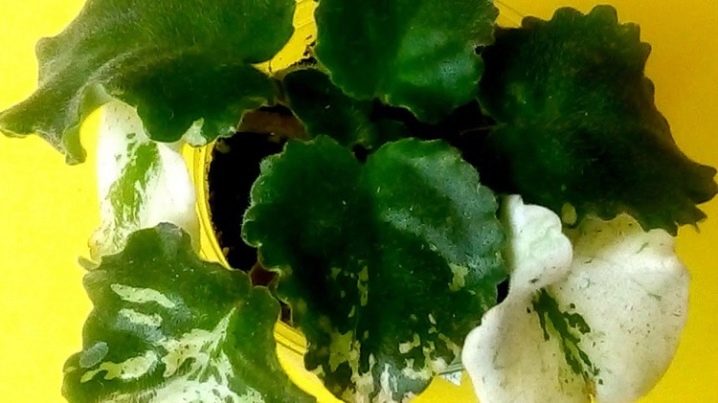
"Anna Maria"
The flower has pink petals with double edges. Quilted rosette, variegated, dark green color.

"Ben"
Leaves are cone-shaped, olive green with a light edging. The flowers are miniature, delicate lilac and bluish color. Dark rays radiate from the middle of the flower.
They bloom almost all year round.
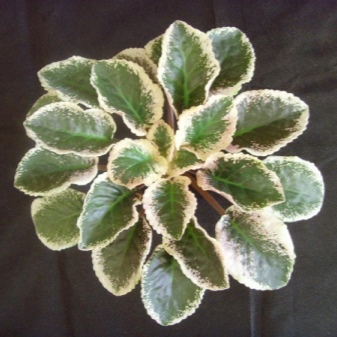
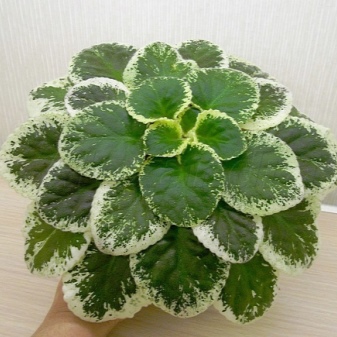
Apache
This is a whole series of violets. Their distinctive feature is wavy foliage. A very capricious variety. Reacts negatively to the slightest fluctuations in temperature and lack of light.
Here are a few titles from this series.
- Apache Favorite Huge flowers of bright scarlet color with fringes around the edges. The leaf is slightly wavy, with pinkish edges.
- Apache Freedom... The flowers are similar to "Pansies" - mauve, lighter in the middle, with a gradual darkening towards the tips. The reverse side of the leaf is red, the front side is green, with pink and white splashes.
- Apache Magic... The flowers are large, deep blue. The rosette of the leaf is pinkish-beige. The leaves are corrugated, with a pinkish edging. The variety is very effective, immediately attracts attention.
- Apache Midnight... This variety is also quite large, the flowers are dark purple, with white ragged edges. Leaves with a beige tint.
- Apache primrose... The variety blooms very profusely, the flowers are pink, darker at the edges than in the middle. The leaves are pale green with a hint of lemon.
- Apache Shadows... The flowers are wavy, red or purple, the shade is deep, saturated. The foliage is variegated, with white and pinkish spots.
- Apache Skybird... The flowers are white, with a pattern in the form of a blue mesh. Corrugated foliage, light green color.
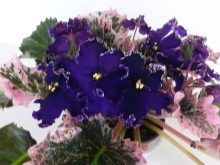
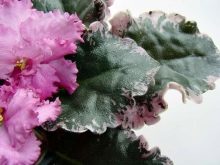

"Ice Rose"
The flower combined 3 shades at once: white, light green and burgundy. The real decoration of the flower is its ruffled fringe.
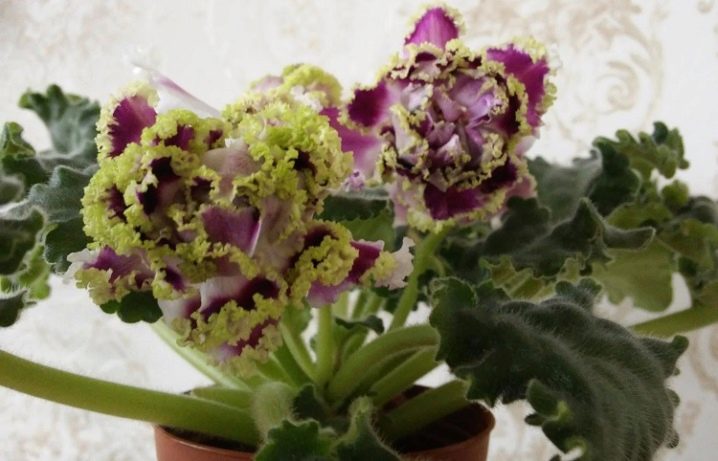
"Chic poppy"
The flowers are large, deep pink in color, and exude a pleasant aroma. The color of the leaves is also uneven: a smooth transition from light green to dense emerald green.
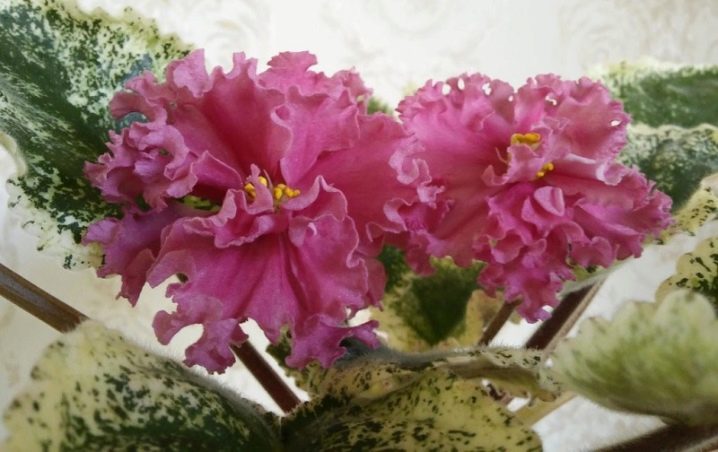
Vintage Wine
The flowers are deep burgundy, the leaves are light with a white edge. Over time, the hem changes color to beige or pink.
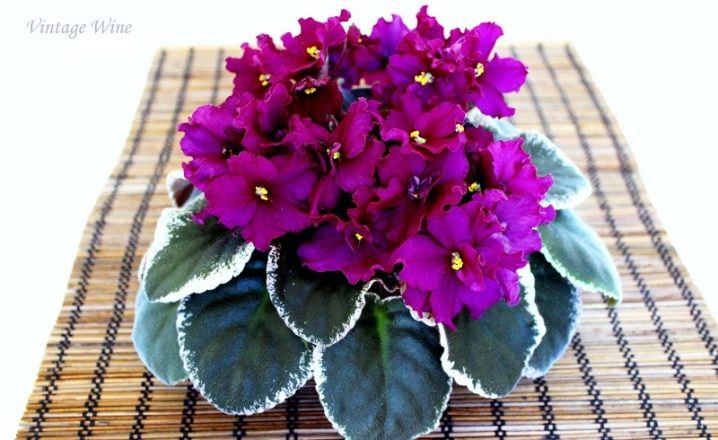
Powwow
Flowers about 5 cm in diameter, the color of aged wine. The leaves are dark green with a thin white edging, as if slightly dusted with snow.
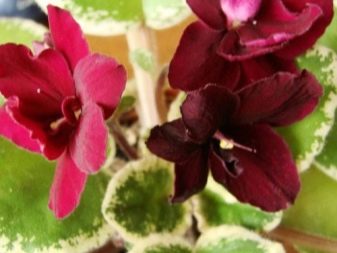
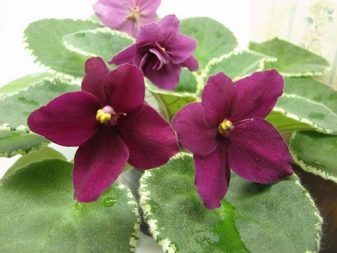
You will learn more about caring for violets in the video below.































The comment was sent successfully.